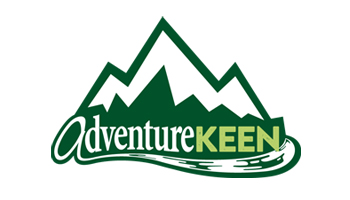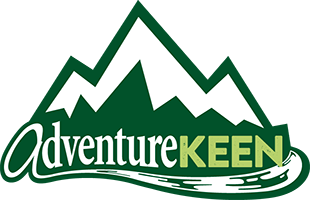
The AdventureKEEN Blog

Stargazing: Get to Know the Night Sky
If you’re stuck at home, you might, like millions of others, find yourself wanting a new hobby. Stargazing is a free, rewarding way to Be Well, Be Outdoors that you can start tonight—assuming the clouds cooperate. Better yet, you don’t need a fancy telescope or a lot of gear to get started, though binoculars and a comfy lawn chair don’t hurt. What You’ll ...

Identifying Trees of the Carolinas
Learn to identify the trees in the Carolinas with Stan Tekiela’s famous Trees of the Carolinas Field Guide. Learn about all 153 species found in the two states, organized by leaf type and attachment. Just look at a tree’s leaves, then go to the correct section to learn what it is. Fact-filled information contains the particulars that you want to know, while ...

Discovering Waverly, A Town with a Population of 106
Today, Nicole Hardina, author of Little Washington, takes us to the town of Waverly. Founded in 1879, the town has a population of 106. A Complicated PastThe town of Waverly received a post office and a name in 1879. Then, while other Inland Empire towns met the railroad and began to flourish, Waverly remained a lonely outpost. An early history describes it as a “little village, quiet ...

Let’s Discover the Birds of Florida
Learn to identify birds in Florida, and make bird-watching even more enjoyable with Stan Tekiela’s famous Birds of Florida Field Guide. This book features 140 species of Florida birds organized by color for ease of use. Do you see a yellow bird and don’t know what it is? Go to the yellow section to find out. This new edition includes more species, updated ...

Little Washington: A Nostalgic Look at the Evergreen State’s Smallest Towns
Little Washington presents 100 of the state’s tiniest towns. With populations under 2,000, these charming and unique locations dot the entire state―from Neah Bay along the Northwest coast to LaCrosse, a farming community in the eastern county of Whitman. With full-color photographs, fun facts, and fascinating details about every locale, it’s almost as if you’re walking down Main Street, waving hello to folks who ...

There’s a Book for That!
As more and more people look to hiking for exercise, as a hobby, as a challenge, for improving their mental health, and simply as a way to enjoy nature, many need advice on where to go. I often see Facebook posts from people asking for ideas on where to hike if they want to “jump in a lake” at trail’s end, to drive less than ...

Backyard Birding: Getting Started
Birding is big—and getting bigger. As topsy-turvy as this year has been, its events have shaken up enough routines to cause people to notice new things in the world, and that includes the birds flying around their homes. Maybe the boom in new birders is simply tied to the fact that many of us are safe at home and looking out the windows at times when we’d normally be stuck in traffic commuting. Or maybe, […]

Hiking Around Tucson This August
[Note: the following information was current as of August 1, 2020.] The Bighorn Fire, named for the bighorn sheep that roam the Santa Catalina Mountains north of Tucson, began after a lightning strike hit those mountains on June 5th, 2020. Fanned by high winds and exacerbated by hot, dry weather often exceeding 100°F, the fire burned for almost 7 weeks, burning 119,978 acres (178.5 square ...

Hiking with My Dad & Tips for Hiking with Yours
Although I grew up in Colorado, I did not grow up hiking with my dad. I really don’t know why this was the case, but at some point, he was a single dad of two with a full-time job, while I was a sassy teen with a part-time job and homework and friends and crushes. Hiking together just wasn’t part of our world. Yet, when ...

Body Appreciation Through Hiking
No one would ever describe me as an athlete, so I am probably late to the game in appreciating my body’s functionality. Being blessed with good genes so that I’m generally healthy also means that I tend to take my body for granted. The truth is, I long thought of my body in terms of how it looked, how it fit into clothes, or how ...

